April 2016. We arrived late in the afternoon after a drive up and over steep and sometimes rough gravel roads into the Chilean coastal range west of Angol. The road wound into the hills, covered almost completely with tree plantations of Eucalyptus and pine. The national park campground was deserted. Even the office and guardaparque’s house were dark and locked up.
We had come to Nahuelbuta National Park because it protects the largest population of Araucaria araucana, the monkey puzzle tree, in the coastal range west of the central valley of Chile. Nahuelbuta was declared a national park in 1939. Its name in Mapundungun, the language of the indigenous Mapuche people, means “big jaguar.” Jaguars are now extinct in Chile, but they were once found here.
We wanted to see this Nahuelbuta monkey puzzle forest to compare it with what we had seen in the Andes at the site John Muir had visited in 1911 near Volcán Tolhuaca. Nahuelbuta is only about 115 kilometers, as the choroy flies, to the west-northwest of the Muir site. The Araucaria of Nahuelbuta are an isolated, relict population, one of three populations in the coastal range now separated from the main range of the species in the Andes. Past climate changes must be the explanation for this disjunct distribution. During the last glacial age Araucaria must have spread in a continuous forest across the now too-dry and too-warm central valley between the Andes and the coastal range. Genetic studies using microsatellite DNA markers have found genetic divergence between coastal and Andean Araucaria, although there is also significant genetic differentiation within both populations. We wondered if they would look any different.
After setting up camp we took a walk around the campground and roads nearby, watching the last sun turn the low clouds a warm pink. After dinner the clouds cleared, the temperature dropped rapidly, and the sky blazed with stars. The Southern Cross hung in the bright southern Milky Way, with the fuzzy Clouds of Magellan to its north. And the quiet! The deep humming silence of the Universe seemed to wash down on us in that starlight.
——-
The next morning was clear, sunny, and cool. After breakfast we packed our knapsacks and started up the trail to Piedra del Aguila, “Eagle’s Rock,” one of the high points in the Cordillera Nahuelbuta. The trail passed through a beautiful old-growth forest of giant Araucaria and coigüe (Nothofagus dombeyii). The dark, cool, moist forest reminded me of the temperate rainforest at Tillamook Head in Oregon, or the coastal redwoods of northern California. Not too surprising, perhaps: we were in the mirror-image climate region of the Southern Hemisphere. By coincidence, Nahuelbuta is at 37.5 degrees south latitude, and Muir Woods National Monument just north of San Francisco, with its coast redwoods, is at 37.5 degrees north latitude. We had wonderful views of the old forest on this trail – and what a forest! I was so happy to be in such a beautiful place on Earth, and on such a beautiful day.
At one point along the trail we heard the hammering of woodpeckers, and watched a family of the carpintero negro, the Magellanic woodpecker (Campephilus magellanicus), looking for breakfast in the big coigües above us. These are giant woodpeckers, up to 18 inches long – larger than our North American pileated woodpecker, and similar in size to the extinct ivory-billed woodpecker to which they are related. They are one of the largest woodpeckers in the world. We had great views of the red-headed, crested male.
Many of the Araucaria along the trail had fire scars. I photographed at least seven scars, one of which had lobes of overgrowth that recorded five separate fires. Not far from the trailhead was a tree marked on the trail map as the “Araucaria milenaria,” or “millennium Araucaria,” which had a cave-like fire scar large enough to stand in, and which went up inside the tree for ten feet or more. The park brochure claimed that the tree was around 1,500 years old, but later a park guard told us that charcoal from the fire scar had been dated by carbon-14 dating to 2,300 years ago.
Araucaria are fire-survivors; they are fire-adapted and fire-tolerant. Their thick, corklike, deeply-fissured bark protects the growing tissue underneath from the heat of ground fires, and the branch-shedding growth pattern that gives old trees their umbrella-like form puts their living branches above the reach of the highest flames of a crown fire. Today it was hard to imagine that these wet woods could ever burn, but the evidence of past fires was all around us, recorded in these fire scars.
This year was a good year for Araucaria seed production, and in places under the female trees the ground was thick with their big seeds, called piñones here. Noisy flocks of piñone-feeding parrots, the choroy, or slender-billed parakeet (Enicognathus leptorhychus), passed over us many times during the morning.
After about two hours we reached the rocky granite ridge of Piedra del Aguila, with an elevation of about 1,460 meters, or about 4,800 feet, above sea level. Low clouds still hung on the ridges to the north and west, scudding in from the Pacific on a strong breeze. The ocean was not that far away – on clear days you can see it from these peaks in the Cordillera Nahuelbuta, but not today. The central valley to the east was hazy. We took off our hiking boots, lounged in the sun, ate lunch, and enjoyed the view.
——-
Back at camp after a glorious hike, it was cooling down fast as the sun set. The wind was picking up, and a front from the southwest was forecast to bring rain tomorrow. We decided to cook dinner right away: longaniza, Chilean sausage, with pasta and marinara sauce, washed down of course with vino chileno. We cleaned up as best we could in the near-dark, and poured the grease from frying the sausage under a tree near the camp. I huddled in the driver’s seat of our little Peugeot rental car and wrote in my journal by headlamp-light before sliding into my sleeping bag by 10:00 PM. All night long the wind thrashed through the forest, buffeting the tent, and our dreams. By morning the wind had died. Dawn was grey and foggy. Hot coffee and a hearty breakfast prodded us into the new day.
As we were unpitching the tent and packing up, we noticed that where we had poured the sausage grease under the tree, all of the leaves had been scraped away, down to bare dirt. Some animal had visited our camp as we slept in the windy night. We imagined a nocturnal visit from Darwin’s fox.
Charles Darwin, in his Beagle diary entry for December 7th, 1834, wrote: “We had a foul wind & a good deal of swell to struggle with, but we reached the Island of S. Pedro, the SE extremity of Chiloe, in the evening. When doubling the point of the harbor, Mrs Stuart & Usborne landed to take a round of angles. A fox (of Chiloe, a rare animal) sat on the point & was so absorbed in watching their maneuvers, that he allowed me to walk behind him & actually kill him with my geological hammer.” Later, in his Journal of Researches , Darwin added: “This fox, more curious or more scientific, but less wise, than the generality of his brethren, is now mounted in the museum of the Zoological Society.” Darwin said it was an “an undescribed species.” A sad fate for a poor, innocent fox, but Darwin had discovered a new species, a member of a South American genus of canids more closely related to wolves than foxes. Studies of mitochondrial DNA by Christopher Yahnke and colleagues in 1996 showed that Darwin’s fox is genetically distinct from the two other Chilean fox species. This species scientific name is now Pseudalopex fulvipes. It is called zorro de Darwin in Spanish.
Darwin’s fox is listed as critically endangered by the World Conservation Union, IUCN. It is believed that there are only 250 Darwin’s foxes on Chiloé Island and up to 70 on the mainland. According to the IUCN “a small subpopulation has been observed since 1975 in Nahuelbuta National Park. It appears that Darwin’s Foxes are restricted to the park and the native forest surrounding the park. This park… is a small habitat island of highland forest surrounded by degraded farmlands and plantations of exotic trees. This subpopulation is located about 600 km north of the [Chiloé] island population.” Studies in 2004 and 2014 provided evidence from camera-trapping and other methods that other small relict populations of Darwin’s fox also exist in the Valdivian coastal range between the island of Chiloé and Nahuelbuta.
One study, by Vila and colleagues in 2004, speculated that “The Valdivian coastal forest, in which the Darwin’s fox lives, historically spanned from Nahuelbuta National Park southward past Chiloé Island on the mainland. Furthermore, the forest on Chiloé Island was connected to the mainland forest by a land bridge for much of the Pleistocene. Thus, the distribution of Valdivian forest suggests that the historic range of Darwin’s fox may have been much larger.” Like Araucaria araucana, apparently Darwin’s fox retreated to a climate-change refuge in the Cordillera Nahuelbuta, and their small population there may be a relict of a once much wider distribution.
——-
Our plan for the day was to make our way west toward the coast, stopping in Cañete to see a museum of Mapuche culture that several people had told us was excellent. After loading our camp into our little rental car, we drove up through the fog-blanketed Nahuelbuta forest, and over the pass to the west.
After leaving the national park, the road passed through an adjacent private protected area, Caramávida, which conserves more of the rare, relict coastal Araucaria forest. This area, designated by the giant Chilean commercial forestry company Arauco as an “área de alto valor de conservación,” is a possible model of how the Muir site might be protected and conserved, which is also on private land owned by a forest products company, and also an “area of high conservation value.”
But after almost an hour of driving on the slow gravel road, we found the road blocked by two big pine trees from the Arauco plantation that had blown down in last night’s windstorm. They were way too big for us to move, we had no chain saw, and we had seen no cars on these backroads in two days. Our only option was to drive back through Nahuelbuta to Angol in the central valley, and make or way onward from there to our next adventure. The drive up and through the foggy forest was again calming and beautiful. We won’t soon forget the Araucaria of Nahuelbuta, or camping with Darwin’s fox.
For related stories see:
- Tracking John Muir to the Monkey Puzzle Forests of Chile
- Following Muir’s Route in Sketches and Photos
- Documenting Forest Change at the Muir Site
- Maples, Mapuches, and Monkey Puzzles: Human Dimensions of John Muir’s Travels in Chile
- All I Came to Seek I’ve Found: Closing the Loop with John Muir in California
- The View from El Cañi
- Following Up on Following John Muir to the Monkey Puzzle Forests of Chile
Sources and related links:
- Nahuelbuta National Park
- New insights into the genetic structure of Araucaria araucana forests based on molecular and historic evidences. Martin et al., 2014.
- Genetic variation in the vulnerable and endemic Monkey Puzzle tree, detected using RAPDs. Bekessy, et al., 2002.
- Magellanic Woodpecker
- Choroy or slender-billed parakeet, Enicognathus leptorhyncus
- Darwin’s Fox
- Darwin Online: Charles Darwin’s Beagle Diary
- IUCN Red List of Threatened Species: Pseudalopex fulvipes (Darwin’s Fox)
- Darwin’s Fox: A Distinct Endangered Species in a Vanishing Habitat. Yahnke, et al. 1996.
- Detecting the vanishing populations of the highly endangered Darwin’s fox, Pseudalopex fulvipes. Vila, et al., 2004.
- A new population of Darwin’s fox (Lycalopex fulvipes) in the Valdivian Coastal Range. Farías, et al., 2014.
- Arauco, Medio Ambiente

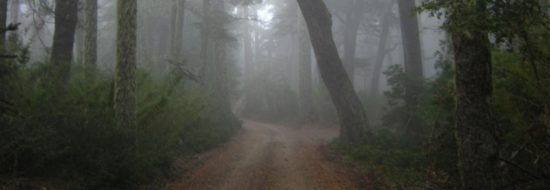
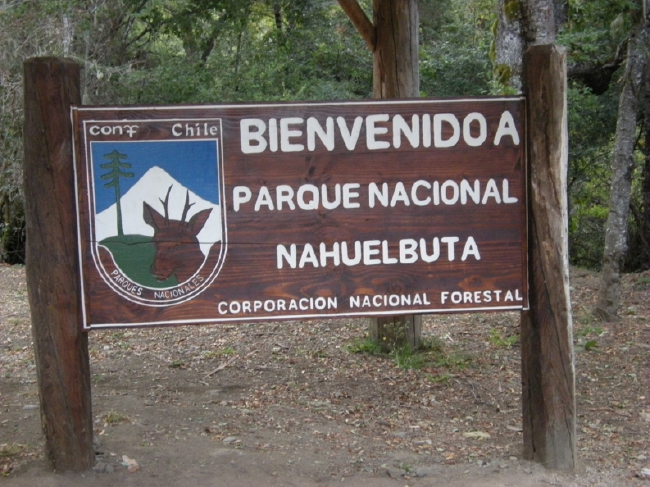
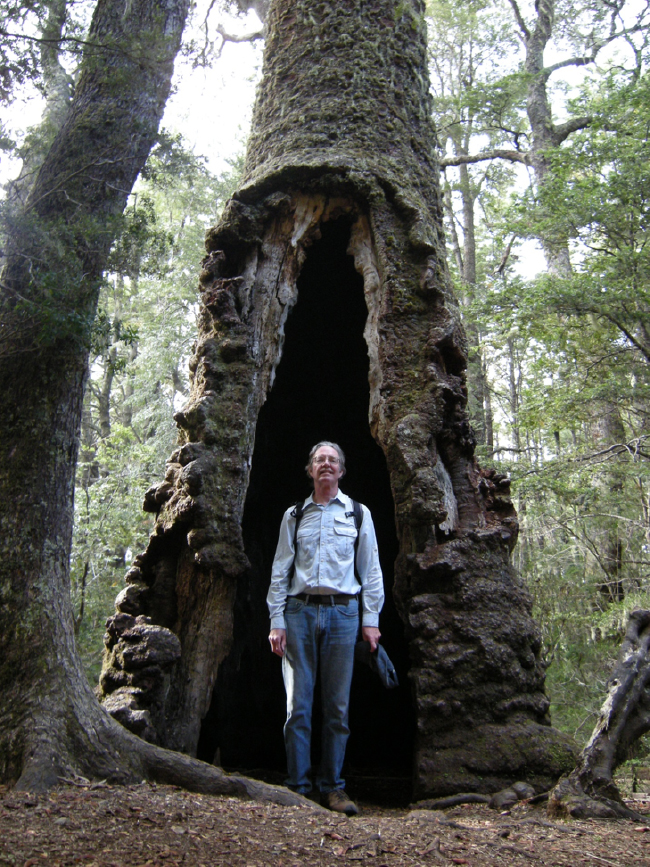

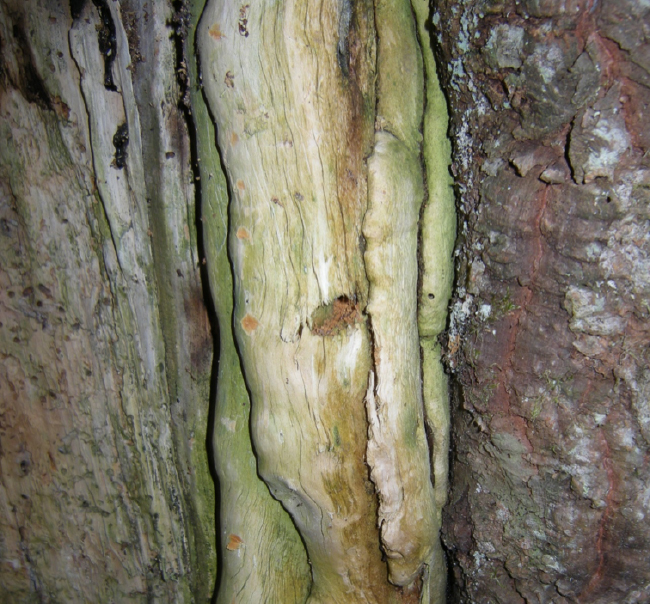
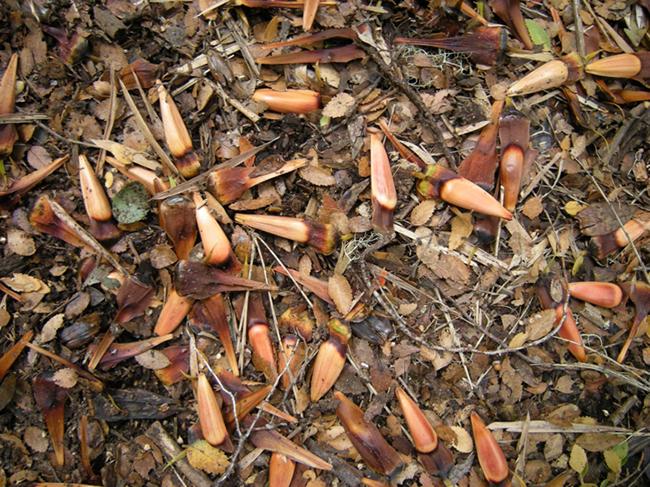
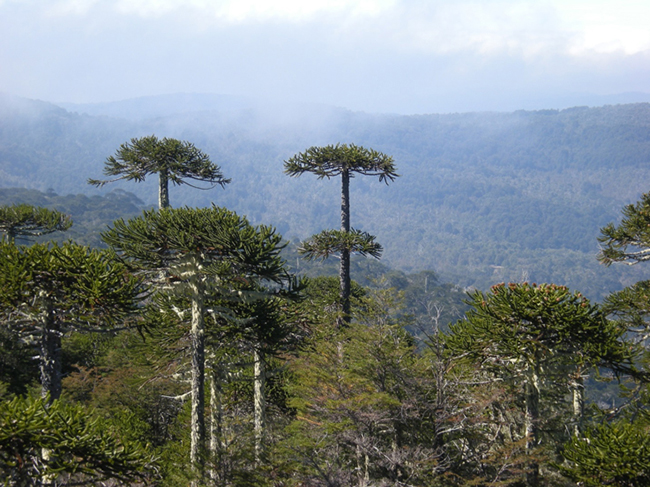
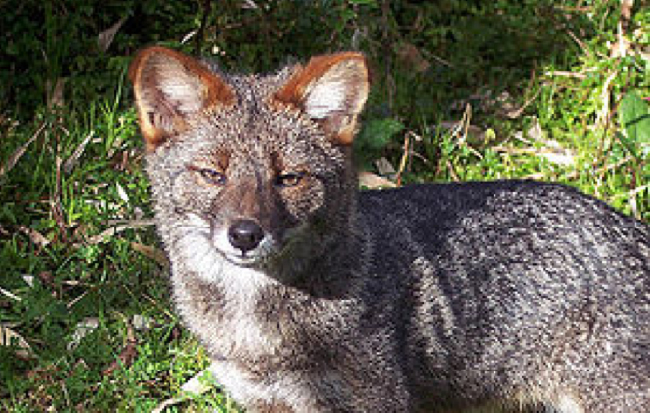
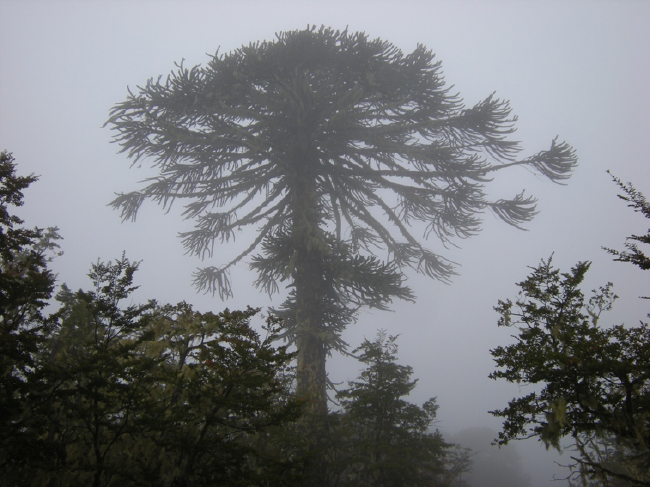
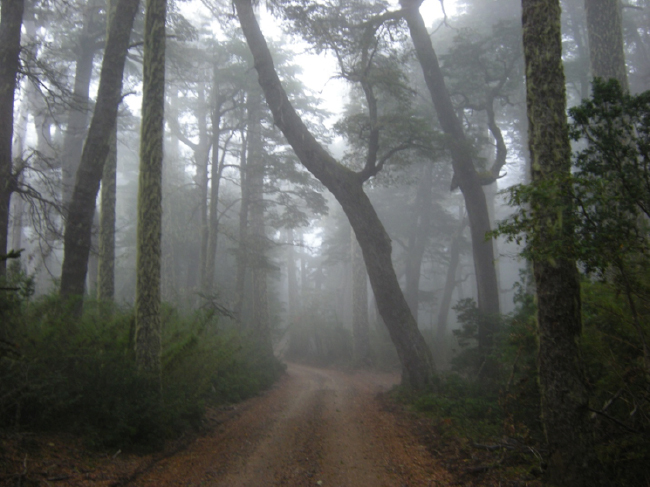
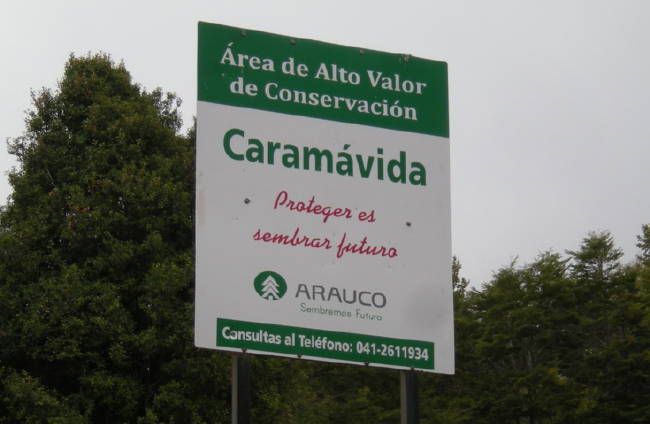
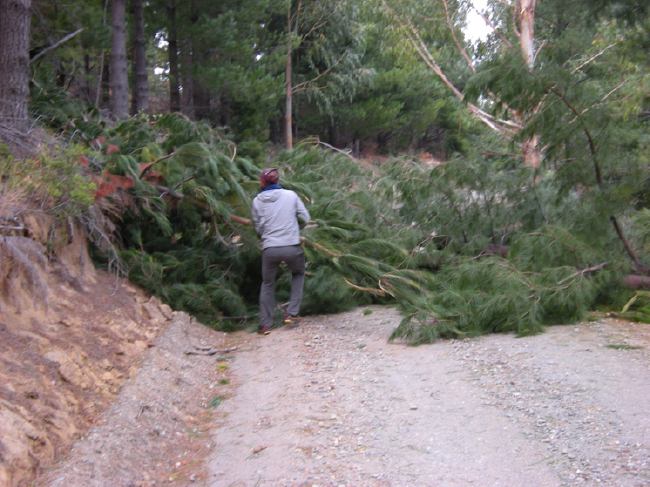
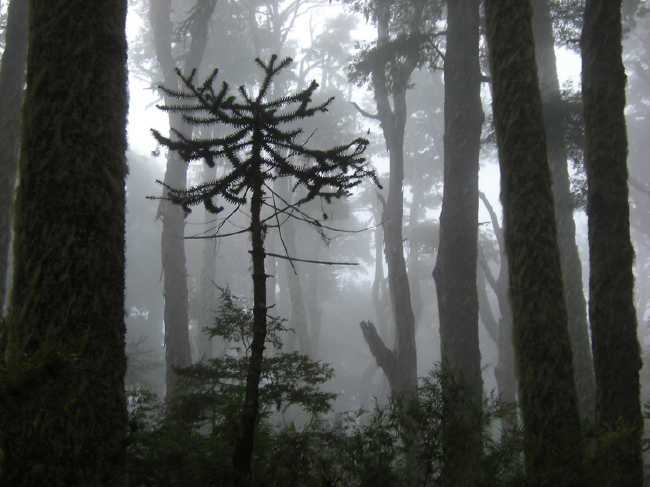



June 15, 2016 3:11 am
Great adventure! Thanks for sharing. Fascinating woods for sure.
dave
June 19, 2016 10:23 pm
Sounds like fun.
—Sid
November 1, 2016 10:32 pm
How are you saving the Darwin’s
Foxes? Are you getting any funds for the foxes?
Is worldwide fund helping?
Please let me know if you accept donations?
Yvonne